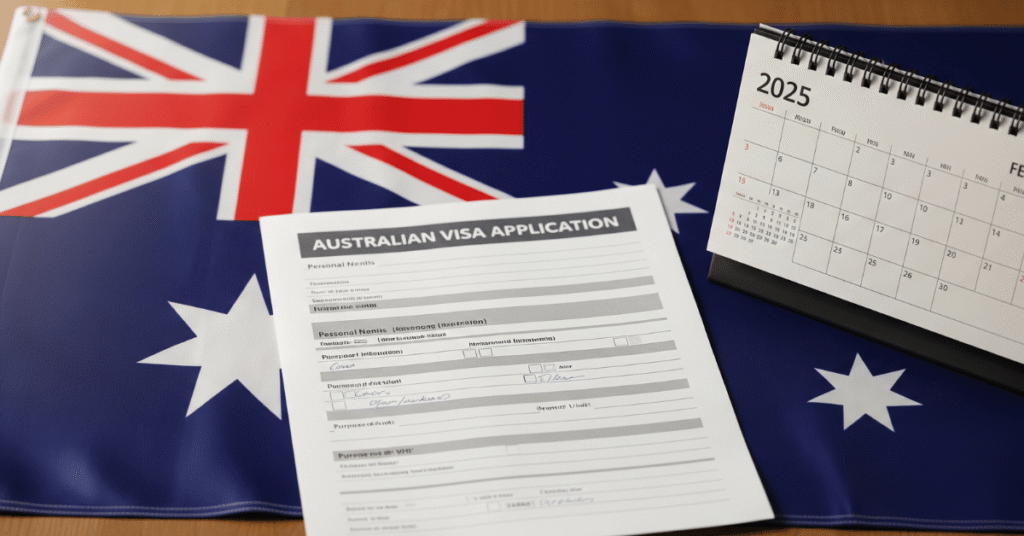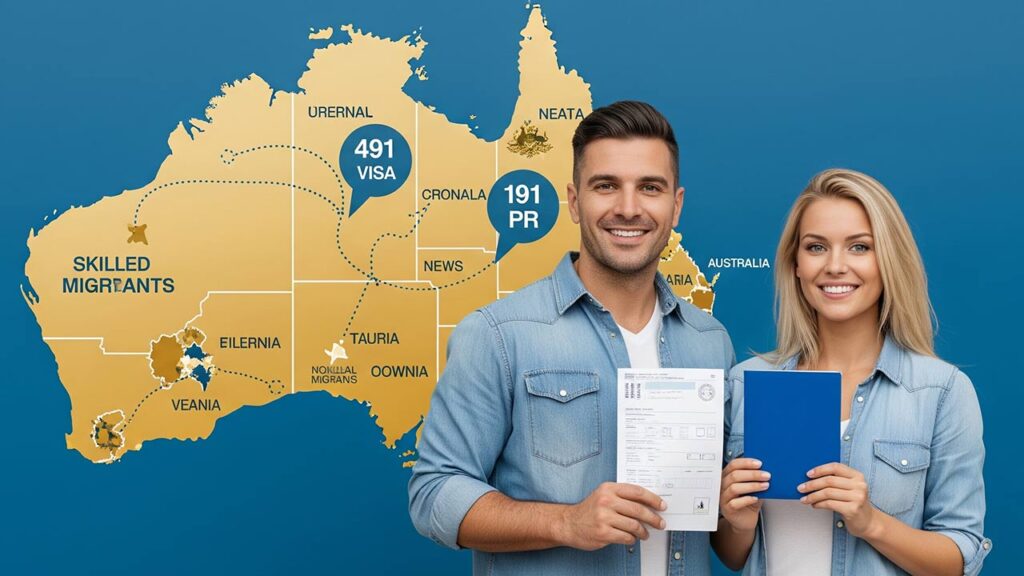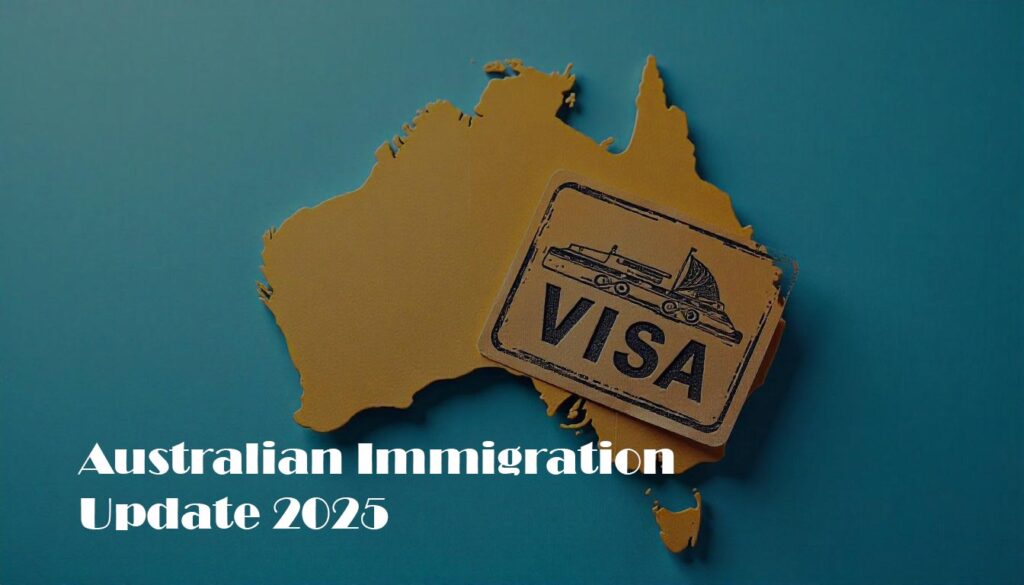Skilled Work Regional Visa (Provisional) (subclass 491) is a favourite route through which skilled people pursue the construction of their new lives in regional Australia. Although in itself a great opportunity, most 491 visa holders wish to upgrade to Permanent Residency (PR) in order to have more security and longer-term advantages. This article will discuss in detail the main pathway through the 491 visa to PR through the subclass 191 visa, including the particular requirements of the 491 to 191 visa in 2025, a step-by-step guide to applying, and important details to watch out for to smooth the process out. We will also discuss other options for individuals whose situation may change, providing detailed information regarding ways of obtaining PR with a 491 visa.
What is the Skilled Work Regional (Provisional) Visa (Subclass 491)?
The subclass 491 visa is a provisional visa designed to attract skilled migrants to regional areas of Australia.
- Who is it for? It’s for skilled workers nominated by an Australian state or territory government agency, or sponsored by an eligible family member residing in a designated regional area.
- Main visa conditions:
- Validity: It allows you to live, work, and study in designated regional areas for up to five years.
- Regional requirement: A key condition is the requirement to live and work only in designated regional areas of Australia.
- Point-tested: Applicants must meet a minimum points score based on factors like age, English proficiency, skilled employment, and qualifications.
- Stepping stone to PR: This skilled work regional visa is often used as a stepping stone to permanent residency, primarily through the subclass 191 visa.
- Work rights: Holders have full work rights within the designated regional areas.
- Family Inclusion: You can include eligible family members (including your partner and dependent children) in your application.
Why Upgrade from a 491 Visa to Permanent Residency?
Though the opportunities under the 491 visa are great, the transition from the 491 visa to PR offers immense benefits that improve your lifestyle and future finances in Australia. The value of PR is hard to overlook:
- More Security: Permanent residency will offer you the privilege of residing in Australia permanently, and thereafter, you will not be required to apply or renew your visa.
- No Work Restrictions: PR does not come with any work restrictions, meaning you are free to live in Australia and work wherever you want (though the 191 visa requires a period of regional compliance).
- Access to Medicare: Being a permanent resident, you will have complete access to the Australian healthcare system, Medicare, which covers free or discounted medical services.
- Eligibility for Citizenship Later: Once you satisfy particular residency thresholds (usually four years of legal residence in Australia, one year as a permanent resident), you become eligible to acquire Australian citizenship.
- Improvement of Quality of Life: PR can result in increased stability, access to more services, and the permitted longer-term planning without a visa requirement.
- Future Opportunities for Family Members too: Being a permanent resident, you will be entitled to sponsor your deserving family members for other forms of Australian visas and pave the way for your extended family.
Main Pathway: Moving from 491 Visa to 191 Visa PR
The first and easiest path to a visa 491 to PR is the Permanent Residency (Skilled Regional) Visa (subclass 191). The introduction of this visa was particularly to present a smooth directive of providing a direct pathway to provisional visa holders who have shown commitment in living and working in regional Australia. The 191 visa officially began on November 16, 2022, and is meant to accommodate people who have held either a subclass 491 or a subclass 494 (Skilled Employer Sponsored Regional (Provisional)) and fulfilled the regional residence criterion and income criterion.
What is the Subclass 191 Visa?
The subclass 191 visa is the Permanent Residence (Skilled regional) Visa. It provides the immediate pathway to the holders of some of the provisional regional visas, such as the 491. This visa provides complete, permanent residency, meaning that you may stay in Australia as long as you want to. In comparison to the 491, there is no restriction on work or travel to the regional areas, and the 191 visa provides a pathway to Australian citizenship to deserving people.
Understanding the Pathway: Subclass 491 to Subclass 191
The transition from 491 to 191 is designed to reward those who genuinely settle and contribute to regional Australia.
The Transition from Provisional to Permanent
-
Skilled Work Regional (Provisional) Visa (Subclass 491):
- Temporary visa (up to 5 years).
- Requires living, working, and studying in designated regional areas.
- Must meet regional residence and income thresholds.
- No age limit for application if a 491 visa holder.
-
Permanent Residence (Skilled Regional) Visa (Subclass 191):
- Permanent visa.
- No regional living/work restrictions after the grant.
- Pathway to Australian Citizenship.
To make the transition, you must demonstrate a commitment to regional Australia during your time on the 491 visa by fulfilling the key 491 to 191 visa requirements.
Key Requirements to Move from 491 Visa to 191 Visa
To successfully convert your visa 491 to PR via subclass 191, you must meet the following core requirements:
- Held a 491 Visa for at least 3 years: You must have held an eligible provisional visa (Subclass 491 or 494) for a minimum of three years immediately before applying for the 191 visa.
- Met the minimum taxable income threshold for 3 years: You must demonstrate that you have earned a “taxable income” at or above the specified threshold for at least three income years while holding your 491 visa. As of 2025, the Temporary Skilled Migration Income Threshold (TSMIT) is a key benchmark for various skilled visas. While the specific threshold for the 191 visa may be adjusted, it has historically been around AUD $53,900 per taxable income year. It is crucial to check the Department of Home Affairs website for the most current and exact figure.
- Complied with regional living/work conditions: You and all included family members must have genuinely lived, worked, or studied in a designated regional area of Australia throughout your 491 visa period.
- Meet health & character requirements: You and all family members included in your application must continue to meet Australia’s health and character requirements.
Transitioning as a Primary or Secondary Applicant
The pathway from 491 to 191 is designed to be inclusive of families.
Primary and Secondary Applicants Transitioning to PR (Subclass 191)
-
Primary Applicant (Main Visa Holder):
- Must meet all core 191 visa requirements (3 years on 491, income threshold, regional compliance).
- Applicable for the 191 visa.
- Family members can be included in the same PR application.
-
Secondary Applicants (Dependent Family Members):
- Must have been included on the primary 491 visa as a family unit member.
- Do not need to meet the income threshold themselves.
- Must have complied with the regional living/work conditions of the 491 visa.
- Must meet health and character requirements.
- Can be included in the primary applicant’s 191 visa application.
It’s vital that both primary and secondary applicants have consistently complied with all conditions of their 491 visa throughout its validity.
Step-by-Step Process: How to Apply for the 191 Visa
Here’s a clear step-by-step checklist on how to get PR after a 491 visa:
- Step 1: Check Your Eligibility: Ensure you meet all the 491 to 191 visa requirements, including the three-year regional residency and income threshold.
- Step 2: Gather Required Documents: Collect all necessary evidence, such as:
- Passport and identity documents.
- ATO Notices of Assessment (tax returns) showing that you earned above the required level of income for three years of income as required.
- Evidence of residence in regional locations (e.g. rental agreements, utility bills, and employment contracts).
- Proof of mastering the English language (in case it is not indicated).
- Health report and police checks (they might require current updates).
- Step 3: Create or Log In to Your ImmiAccount: The application is lodged online through the Department of Home Affairs’ ImmiAccount portal.
- Step 4: Complete the Subclass 191 Visa Application Form: Accurately fill out all sections of the application form, providing comprehensive details.
- Step 5: Pay the Application Fee: Pay the required visa application charge.
- Step 6: Wait for Your Application to Be Processed: The Department will assess your application. Processing times can vary, so patience is key.
- Step 7: Receive Your Visa Decision: You will be notified of the outcome of your application. If successful, your 191 permanent residency visa will be granted.
Benefits of Subclass 191 Permanent Residency
After successfully converting your visa 491 to PR using the 191 visa, you get to enjoy the benefits of the 191 visa that completely transform your position in Australia. Among them are indefinite residence, complete rights to work anywhere in Australia, eligibility to receive Medicare, sponsorship of other eligible relatives, and a defined path to natural citizenship of Australia.
Alternative 491 Visa to PR Pathways
Although a 191 visa is the specific and most popular way, in specific situations, some 491 visa holders can become eligible for other permanent resident visas:
Employer-Sponsored PR (e.g., 186 Visa)
Assuming a 491 visa recipient has obtained a permanent job offer in a non-regional area with an Australian employer, then there is a possibility that they may be nominated with an Employer Nomination Scheme (ENS) Subclass 186 Visa. This typically involves the employer being a skilled sponsor, the nominated occupation must appear on an appropriate skilled occupation list, and age, skills assessment, and English language requirements must be met by the applicant.
General Skilled Migration (e.g., 189 or 190 Visa)
It is less likely, but a 491 visa holder is potentially then able to apply to a Skilled Independent Visa (Subclass 189) or a Skilled Nominated Visa (Subclass 190), provided they still fulfil the requirements of their occupation(s) on the associated skilled occupation lists and that they pass the points test. This would generally mean making a new Expression of Interest (EOI) and possibly a new state nomination (of the 190 visa).
Partner Visa (Subclass 820/801 or 309/100)
Partner Visa Australia can be obtained by a 491 visa holder provided that the holder has entered into a sustained and bonafide relationship with an Australian citizen or permanent resident. This may be an Onshore Partner Visa (subclass 820/801) in case they are in Australia, or an Offshore Partner Visa (subclass 309/100) in case they are not in Australia.
Common Mistakes to Avoid When Moving from 491 Visa to 191
Understanding how to convert a 491 visa to PR also means being aware of potential pitfalls:
- Not Meeting the Minimum Income Requirement: This is one of the most common reasons for refusal. Ensure you understand the taxable income threshold and meticulously keep records to prove you’ve met it for the required three years.
- Moving Out of Regional Areas Too Soon: Prematurely moving to a major metropolitan city before your 191 visa is granted (or before completing the required regional residency period) can result in your application being refused, as it violates a key condition of your 491 visa.
- Missing Tax Deadlines: Ensure you lodge your tax returns on time each year to accurately report your taxable income to the Australian Taxation Office (ATO).
- Submitting Incomplete or Incorrect Documents: Any missing or inaccurate information can significantly delay processing or lead to refusal. Double-check all submissions.
- Not Understanding Visa Conditions: Familiarise yourself with all 491 visa conditions and adhere to them strictly throughout your provisional visa period.
Tips for a Smooth Transition from 491 Visa to 191
- Keep detailed tax records: Maintain all your Notice of Assessment documents from the ATO for the entire period you hold your 491 visa. These are crucial for proving your income threshold.
- Stay on top of visa conditions: Regularly review the conditions of your 491 visa to ensure continuous compliance, especially regarding living and working in regional areas.
- Plan for health checks and police clearances: These are typically required for PR applications. Be prepared to undergo new medical examinations and obtain updated police certificates.
- Use a registered migration agent if you’re unsure: The migration process can be complex. Engaging a registered migration agent can provide peace of mind and significantly increase your chances of a successful application.
- Keep copies of your residential history: Maintain records of all your addresses while on the 491 visa, particularly utility bills or rental agreements, as proof of regional residence.
Conclusion
The 491 visa roadmap to PR, mainly via the subclass 191 visa, is a strong and defined course of action for skilled and semi-skilled migrants who are willing to be devoted to regional Australia. You can take your time and prepare to cater to the needs of the 491 to 191 visa requirements, get all the proper preparations made in advance, and keep proper documentation to have a smooth ride. The 491 visa is actually a powerful route towards getting a permanent residency with a myriad of benefits and a sure road towards prosperity in Australia.
Get Expert Help from VXL Migration and Education Consultants for Your 491 to PR Pathway
Understanding how to get PR after a 491 visa can be complex, and any misstep can have significant consequences. At VXL Migration and Education Consultants, we possess extensive experience and up-to-date knowledge of Australian immigration laws, including the nuances of 491 to 191 visa requirements. Our team of registered migration agents is dedicated to providing personalised guidance and comprehensive support throughout your entire journey. Don’t leave your Australian dream to chance.
Take the proactive step today and book a consultation with our expert migration team. Let VXL Education provide you with the clarity, confidence, and professional assistance you need to achieve your Australian permanent residency.
Frequently Asked Questions
How long does it take to get a PR after a 491 Visa?
You can apply for the 191 PR visa after holding your 491 visa for at least three years and meeting all other eligibility criteria, including the income threshold. Processing times for the 191 visa itself can vary.
What if I don’t meet the income threshold?
If you do not meet the minimum taxable income threshold for three income years while holding your 491 visa, you will generally not be eligible for the 191 visa. It’s crucial to ensure consistent employment and income reporting to the ATO throughout your provisional visa period.
Can I include my family in my 191 Visa?
Yes, eligible family members (partner and dependent children) who were included in your 491 visa application can be included in your 191 PR visa application, provided they also meet the health, character, and regional residency requirements.
What documents do I need to prove income/residence?
For income, you will primarily need your ATO Notices of Assessment (tax returns) for the relevant income years. For residence, documents such as rental agreements, utility bills, bank statements showing regional transactions, and employment contracts with regional addresses can serve as evidence.
Can I apply for other visas while on a 491?
Yes, while the 191 visa is the main pathway, you may be eligible for other visas, such as an Employer-Sponsored PR visa (186), another General Skilled Migration visa (189 or 190), or a Partner visa if your circumstances change and you meet their specific criteria.
Do I need a migration agent to apply for the 191 Visa?
While you can apply for the 191 visa yourself, engaging a registered migration agent is highly recommended. They can provide expert advice, ensure all requirements are met, meticulously prepare your application, and help you avoid common mistakes, significantly improving your chances of a successful outcome.
What happens if my 491 Visa expires before my PR is granted?
If your 491 visa expires while your 191 visa application is being processed, you will typically be granted a Bridging Visa A (BVA). This visa allows you to remain lawfully in Australia with the same work and study rights as your previous 491 visa until a decision is made on your 191 application.




